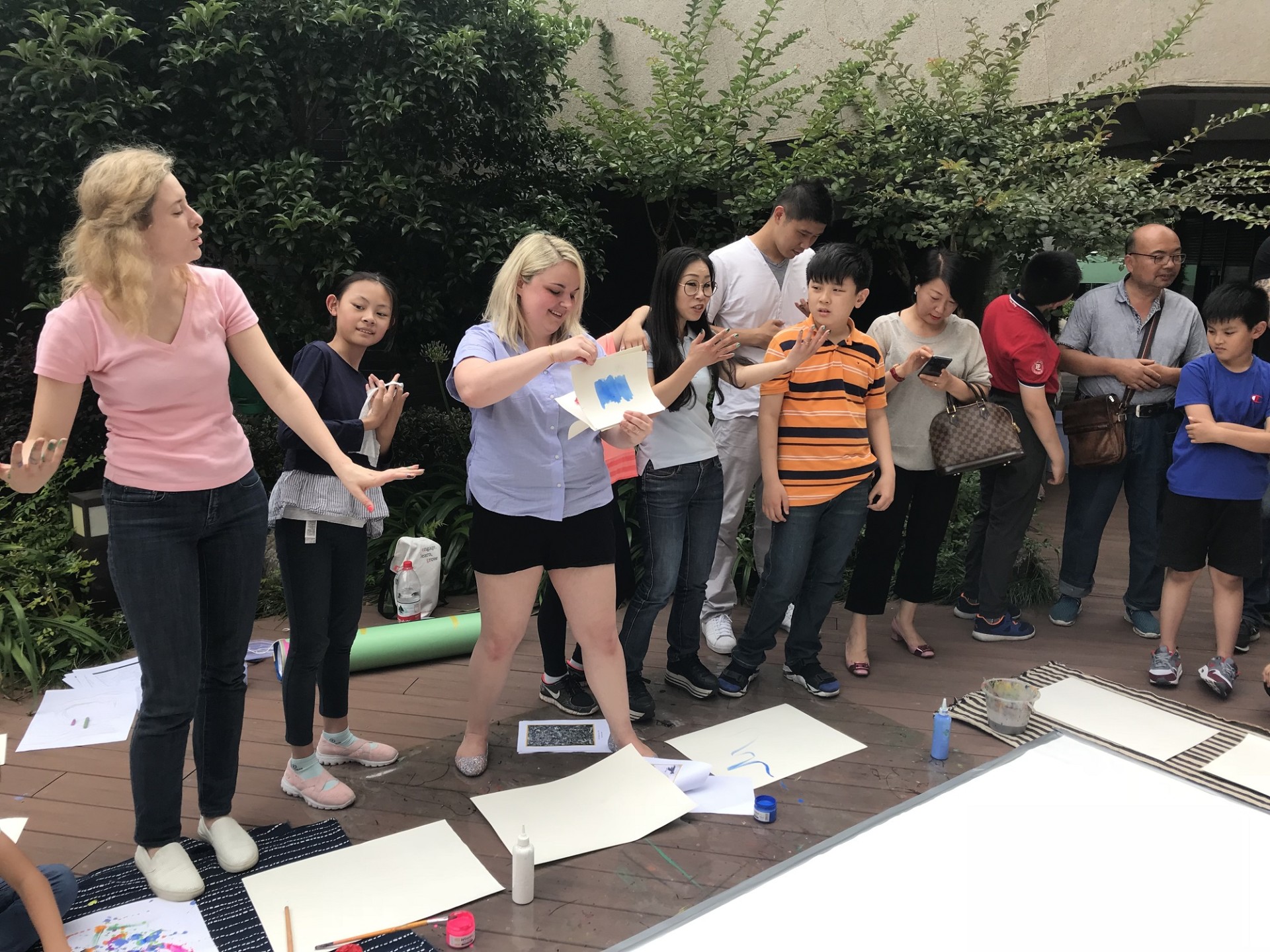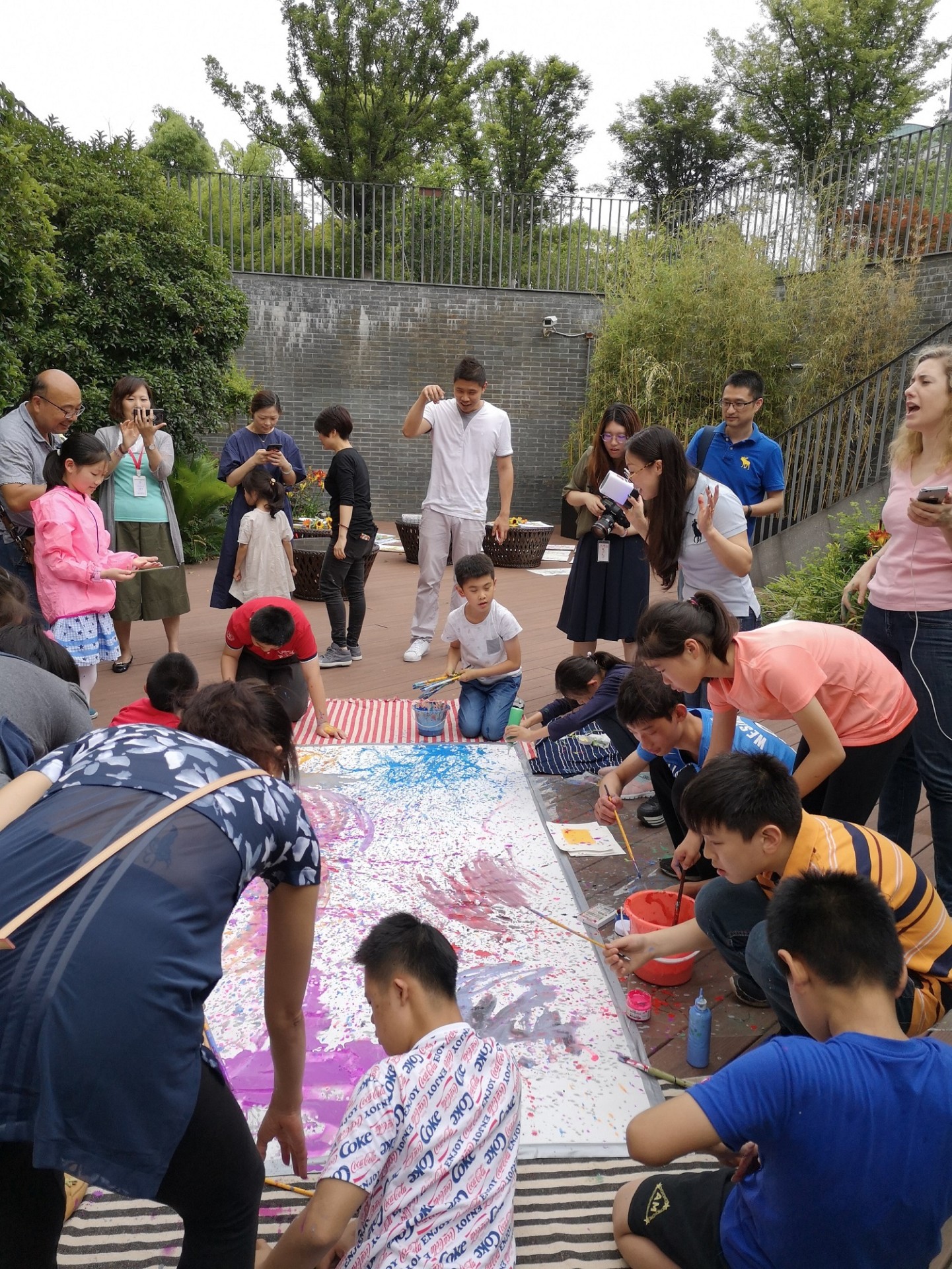By Julia Rose, Director, Programs
Speech-Language Pathologist
Jackson Pollock was an American painter and major figure in the abstract expressionist movement. He is known for his unique style of painting – dripping! He liked to make LARGE canvases where he would drip or flick paint. Although figures and shapes are not present in his art, critics say there is a lot of expression and movement.
This activity allows children to express different emotions while creating their own Pollock-style masterpiece! You can do this one-on-one or with a group of children. We ran this activity at the Liu Hai Su Art Museum last weekend with children standing shoulder-to-shoulder.
The results are beautiful and dramatic, no matter how small or large the group!
Materials:
- An old white or cream sheet/a large roll of paper/or pieces of paper laid side-by-side
- Various sized paint brushes
- Several colors of paint (recommended: Washable Crayola paint, watered down in bowls)
- Other supplies to create textures/splatter: sticks, toothbrushes, combs, bowls, string or yarn
- Tarp to protect floor, if needed

Pollock was not a fan of fresh soft brushes. Instead, he used hard tools that allowed him to fling, drip, and splatter paint. Using the comb, brushes, toothbrush, and sticks, experiment to see how the paint lands. Cut the string or yard and dip it into the paint. Then drag it around the canvas to create lines and movement. Encourage painting from all four sides of the sheet.
Play different types of music as your child or a group of children use the paint to convey their emotions. We chose four different emotions for our playlists, giving the children ten minutes with each feeling: happy, sad, angry, and relaxed.

Talk about how different emotions can be conveyed in art. This is a great activity to do before visiting an art gallery. You can discuss how you think different artists were feeling when they created their artwork.
